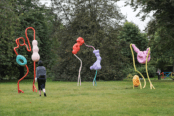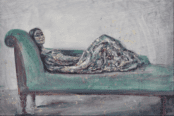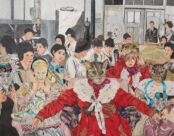[dropcap style=”font-size:100px; color:#992211;”]T[/dropcap]urner. An artist who has inspired or angered many art historians, critics, journalists and art lovers from his day to ours.
An artist who prompts firm and possessive statements about his life and work.
Opinions of his character, art and styles rage – and range – radically. It is then, consequential that Tate Britain is to present a major exhibition on Turner, a new Turner. One aim of the exhibition will be to dismantle the myths that still perpetuate around Turner today. Thus, the exhibition is appropriately entitled Late Turner: Painting Set Free.
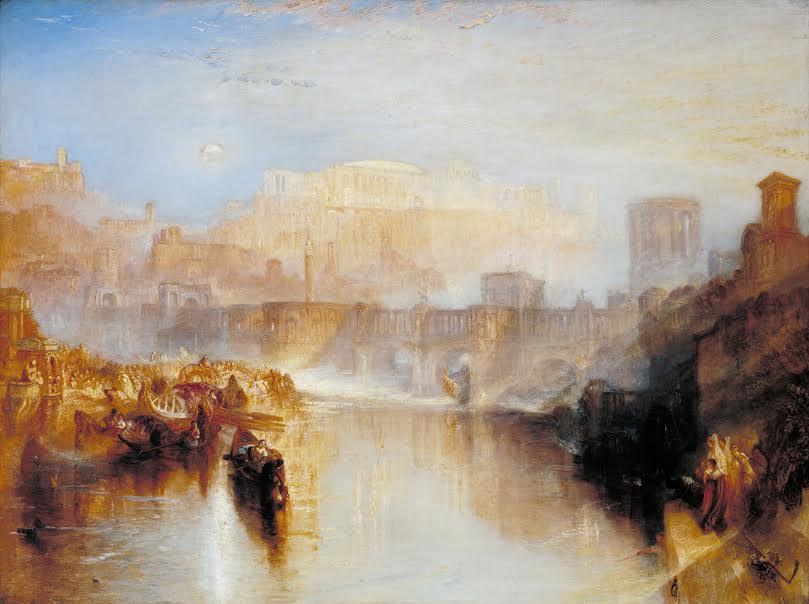 JMW Turner ‘Ancient Rome; Agrippina Landing with the Ashes of Germanicus’ exhibited 1839 Oil paint on canvas support: 914 x 1219 mm frame: 1230 x 1530 x 140 mm painting
JMW Turner ‘Ancient Rome; Agrippina Landing with the Ashes of Germanicus’ exhibited 1839 Oil paint on canvas support: 914 x 1219 mm frame: 1230 x 1530 x 140 mm painting
Tate. Accepted by the nation as part of the Turner Bequest 1856
The joy of Turner is that he inspires so much intrigue, and the possibility for his art to be re-thought and re-investigated is eternal. He will never get old.
Old age, however, is what the Tate will take as its starting point by presenting Turner’s work from 1835 – 50, spanning the last working years of his life. This will make Late Turner the first major exhibition to address the artist’s final achievements. It will challenge the common notion that elderly artists cannot be innovative and specifically that Turner’s mind and hand failed him, making him withdraw from active engagement with critics and public life.
Technical innovations
Other aims include paying close attention to the subject matter of Turner’s colourful work. The exhibition carefully charts how he constantly engaged with Victorian Britain as well as places abroad. His technical innovations in terms of processes and materials are also to be emphasised by drawings, prints and watercolours being exhibited alongside large-scale oil paintings.
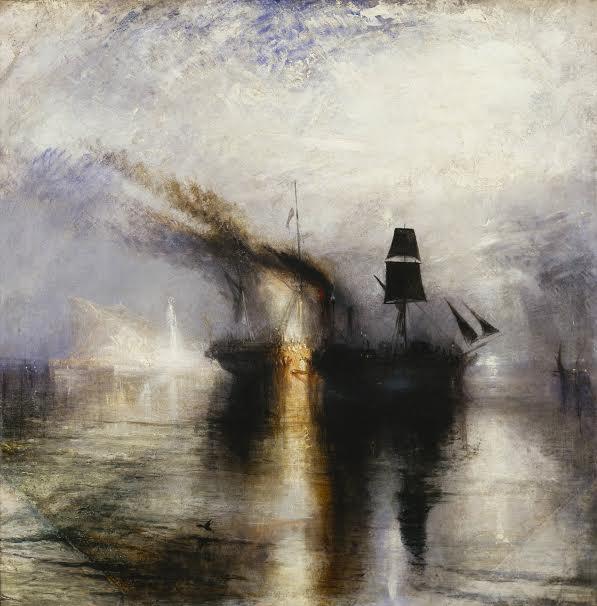 JMW Turner ‘Peace – Burial at Sea’ exhibited 1842 Oil paint on canvas support: 870 x 867 mm
JMW Turner ‘Peace – Burial at Sea’ exhibited 1842 Oil paint on canvas support: 870 x 867 mm
Tate. Accepted by the nation as part of the Turner Bequest 1856
One unusual process is Turner’s reworking of some of his earlier paintings, such as ‘The Wreck Buoy’, suggesting that he was constantly in dialogue with the artist he had been. In this way, the exhibition supports the notion that Turner is emblematic of artistic integrity, always revising, updating and pushing forward his artistic practice. All his life he felt compelled to demonstrate what serious painting can achieve.
A theme that particularly conveys the energy of the ‘elderly’ Turner is travel. Indeed, the most challenging journeys he undertook were during this period and included destinations such as Germany, Denmark and Switzerland. Late Turner also acknowledges Turner’s trips to Venice, from which sprang paintings in controversial colours that capture its elemental delights. Turner embraced the physical and social fabric in which he found himself surrounded, as well as the city’s rich history.
Historic and modern subjects
Both historic and modern subjects interested Turner and thus are a main theme of the Tate’s exhibition. Turner’s attention to his contemporary world partly stemmed from his continual search for new ways of painting and new or contemporary subjects with which to show them off.
Of course, railways feature heavily in Turner’s final period, yet the co-curator David Blayney Brown was keen to stress that, although Turner’s railway paintings look modern – indeed no one else was painting like this at the time – they are also in a sense history paintings. This is partly due to Turner looking back to classical landscapes and elements of Ovid’s Metamorphosis, as well as taking inspiration from seventeenth-century Dutch art.
History painting was, of course, the ultimate objective of a painter. Turner obviously excelled at the form, yet by combining elements of the new with the old he also tackled the notion of history painting in fresh ways. This is evident in the nine paintings making up the series often referred to as ‘radical’ or the ‘square paintings’ that depict scenes of recent events (such as Napoleon in exile in the painting ‘War, The Exile and the Rock Limpet’ 1842) combined with elements of mythology. Fact and fantasy playfully and provocatively intertwine. 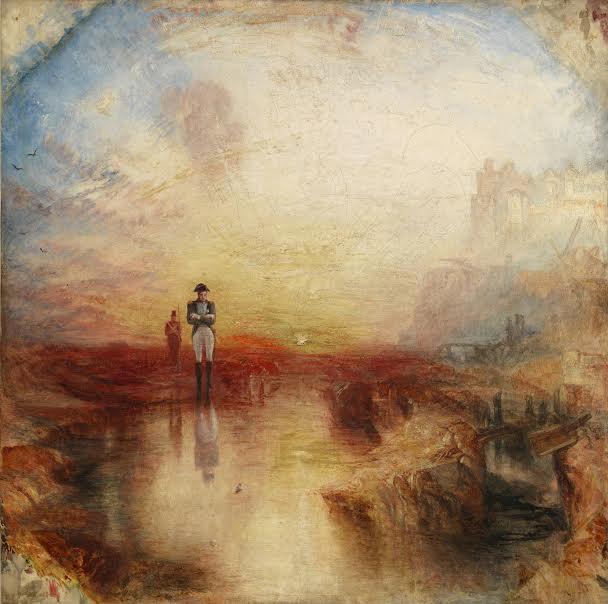
JMW Turner ‘War: The Exile and the Rock Limpet’ exhibited 1842 Oil paint on canvas support: 794 x 794 mm frame: 1030 x 1025 x 125 mm painting Tate. Accepted by the nation as part of the Turner Bequest 1856
A rich coda
Turner’s critics “hailed these paintings with abuse”, yet now they are considered some of his greatest art. Tate Britain will proudly present them as a synthesis of his work, and as Blayney Brown said: “a rich coda”.
By offering many different themes and facets to Turner’s identity as an artist, Late Turner suggests that his critics just couldn’t keep up with him. He certainly created an impressive amount of art and exhibited widely in his last years. Yet, he sold increasingly less work. This meant he was not necessarily painting for public and commercial spheres, which could partially account for the diversity and experimentalism in his final paintings.
However, the Tate is eager to abolish the myth that Turner’s last works are so experimental and forward thinking that they prefigure modern art such as Impressionism and Abstraction. This myth, which was a dominant critical approach in the 1960s, ignores the subjects of Turner’s art to concentrate almost solely on technique and style.
Addressing the myths and disputes
By addressing the myths and disputes surrounding Turner and his work, the Late Turner re-affirms how valuable he is as an artist and how important it is to consider his work, and the ways in which we approach it, for the history of art and arts criticism as a whole. It is asking us not to get stuck in certain, overblown narratives, and to be careful about applying categories to the past.
Indeed certain categories, such as the linear deterministic trajectory of modernism, are exposed as constructs we impose upon the past in attempts to compact artistic output into neat narratives. Late Turner looks forward as much as it looks back. It asserts that revitalising creativity is still possible when dealing with such prominent artists, thus giving hope for new types of art writing to come.
There is a great deal we can still learn from Turner. He was as much an educator in his own day as he is for ours now. Tate Britain’s Late Turner keeps Turner on the stage rather than focusing on his exit. As co-curator Sam Smiles said, these are “paintings with subjects that have resonance”.
Late Turner: Painting Set Free is showing at Tate Britain from 10 September 2014 to 25 January 2015.
[button link=”http://www.tate.org.uk/visit/tate-britain” newwindow=”yes”] Tate Britain[/button]
Helen is an independent art critic and curator with an MA in The History of Art from UCL. Her research interests include nineteenth-century French art and ephemeral objects, Rodin’s sculpture and his developments in photography, and contemporary studio craft. She also keeps a blog – helencobby.wordpress.com and a Twitter account: @HelenCobby





